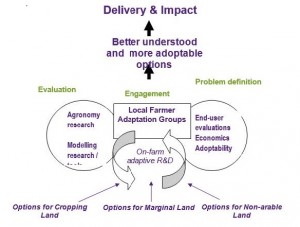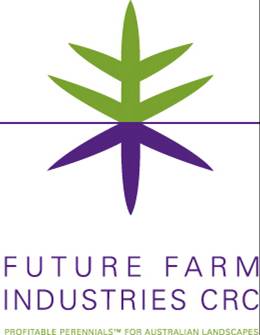This project has the objective of increasing the adoption of mixed-farming options that improve the profitability, resilience and resource base of Australian grain growers. The project has a particular focus on the role of perennial options in achieving these objectives.
EverCrop was established by the CRC Future Farm Industries with funding from GRDC as a multidisciplinary research and development project that works with farmers to develop new and more adoptable grazing options to benefit grain growers in the Southern and Western GRDC region. The current GRDC funded project is intended to utilise this successful participatory farming systems research approach that has been established through nodes in WA, NSW and SA-Vic, and expand activities to new agro-ecological zones including the Northern GRDC region.
Outcomes
- Improved mixed farming systems: Evaluating and developing new or modified mixed farming options in key agro-climatic zones that improve profit, diversify enterprises and provide positive environmental impacts through the incorporation of new grazing options including perennials
- Well developed value propositions for new options – Developing ways to overcome constraints to the adoption of grazing options in cropping-oriented systems by documenting the costs and benefits of particular uses of perennials and other options in mixed farming systems relative to alternatives.
- Greater decision and analysis capacity – Adapt and apply cropping systems analysis tools and approaches that allow farmers and agribusiness to evaluate the role and implementation of perennials.
Current Research
The potential for the current suite of EverCrop perennial options (e.g. pasture cropping; novel forage shrub use; and design of perennial-based mixes in rotation) is being evaluated across a broader range of agro-ecological zones and uses. The project is evaluating a broader suite of options and their potential fit for mixed farmers in terms of location, soil type, scale, farm profitability and farm management. A tool for optimal on-farm tree planting location is also being developed.
Most grain-producing farms have a grazing enterprise that is secondary to cropping. This means new non-crop options must complement the existing cropping dominant farming system if they are to be successfully integrated into the farm business to improve profitability, flexibility, resilience, risk management, resource use and environmental outcomes. Ideally, the crop-livestock system must make efficient use of labour and where possible minimise the environmental impact of the farming system by reducing the risk of erosion and dryland salinity, and improving soil health. This project has the objective of increasing the adoption of mixed-farming options that improve the profitability, resilience and resource base of Australian grain growers.
Over the past 5 years, EverCrop has successfully established a multidisciplinary research and development approach that works with farmers to develop new and more adoptable grazing options to benefit grain growers in the Southern and Western grain growing regions. This project utilises the successful participatory farming systems research approach that has been established through nodes in WA, NSW and SA-Vic, and expands activities to new agro-ecological zones including the Northern GRDC region.
EverCrop will conduct participatory R&D on emerging plant and management options that have moved beyond the plant selection stage, but are identified as still requiring further understanding and development to support broader delivery and extension in crop-livestock systems. The project will extend the impact of existing EverCrop options as well as begin evaluation and development of new options.
The key elements of the EverCrop methodology are:
- Use local farmer-based adaptation groups to inform R&D.
- Conduct agronomic field experiments and monitoring to fill knowledge gaps
- Conduct on-farm participatory R&D
- Apply a range of biophysical and economic models to analyse likely performance of new plant options
- Determine environmental benefits (or costs) associated with practice changes
- Evaluation of adoptability and incorporation of farmer end-user perspectives
- Provide knowledge and tools to support further extension






